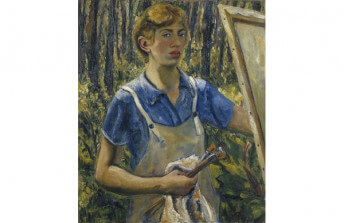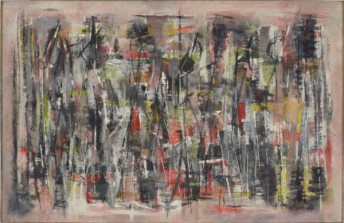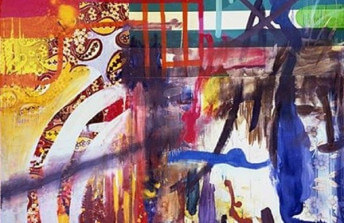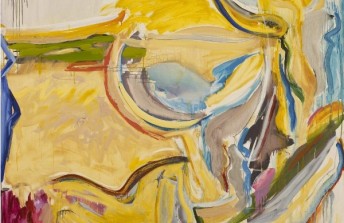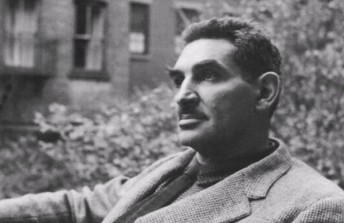Lee Krasner at the Barbican - A Look at An Artist of Her Own
May 1, 2019
This summer, The Barbican Art Gallery in London will mount Lee Krasner: Living Colour, the first European retrospective of the work of Lee Krasner in more than half a century. The exhibition will feature nearly 100 works spanning five decades, following Krasner as she evolves from a figurative painter in the 1930s, through her growing influence as a leading first generation Abstract Expressionist, to her ultimate emergence as one of the most accomplished and beloved voices in 20th Century American abstract art. Over the course of her career, Krasner completed more than 600 works of art, and became one of only a handful of female artists of her generation to have a catalogue raisonné created for her oeuvre. Despite her achievements, however, Krasner is often discussed only in terms of her relationship to her husband, the formidable legend Jackson Pollock. Some historians have even presumptuously suggested that it was only after the death of Pollock in 1956 that Krasner fully blossomed into a mature artist. As should be abundantly clear from the various bodies of work on display in this retrospective, however, Krasner was always an innovative and experimental painter with a vision all her own. Perhaps the only serious difference, in fact, that the death of Pollock had on her work related to the issue of scale. The couple shared a farmhouse together at a property in East Hampton called The Springs. Krasner was relegated to using two small interior rooms of the home as her studio—first a dark living room, and then an upstairs bedroom after Pollock moved his studio out of it and into the unfinished barn on the property. When Pollock died, Krasner moved into the barn, allowing herself to finally work on monumental sized canvases of her own, some of which will be on view in this retrospective. Yet, as anyone who has the pleasure of seeing this exhibition will no doubt see for themselves, scale is only one aspect of her work—and it had little to do with the insight that made Krasner a pioneer from the start, and a master till the end.
Finding Her Way
Lena Krasner was born on 27 October 1908. Her first predilection towards a career in art came mysteriously at age 13, when, upon applying for secondary school, she scribbled down the word “art” when asked for her preferred field of study. Though she later recalled having no idea what she was thinking when she chose that direction, it nonetheless hurled her towards a most fulfilling destiny—one for which she was perfectly suited. One thing she was not, however, suited for was taking what she perceived to be senseless orders. Throughout her studies in secondary school, at Cooper Union, at the National Academy of Design, at the Art Students League, and even while studying with Hans Hofmann, she was repeatedly reprimanded, and once even expelled, for being what one teacher described as “always a bother,” someone who “insists on having her own way despite school rules.”
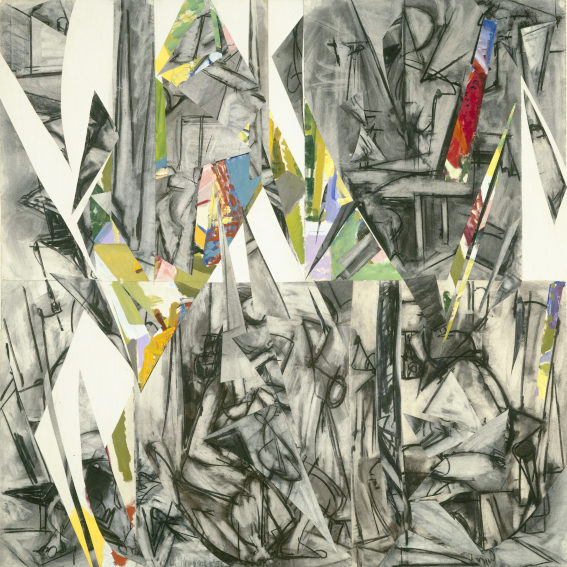
Lee Krasner - Imperative, 1976. National Gallery of Art, Washington D.C. © The Pollock-Krasner Foundation. Courtesy National Gallery of Art, Washington D.C.
Her persistence may have upset her teachers, but it drove her fearlessly towards the discovery of her own, unique voice. When the Museum of Modern Art opened in 1929, she described it as “an upheaval for me.” She became aware for the first time of trends in European art towards abstraction and formalism, and knew immediately that the regionalism of America was not for her. She embraced Cubism and the lessons of Bauhaus teachers, and gravitated towards every avant-garde position she could absorb, always, however, searching for her own voice. When she met Pollock, she tried hard to absorb his theories, adding them to the swirling mix of ideas in her own head. Yet as a painting titled “Igor” from 1943 shows, just as Pollock was gaining prominence for his groundbreaking work, Krasner was fiercely coming into her own. The swirling biomorphic forms and gestural lines in “Igor” combine to create a composition inspired by nature, but energetically abstract. Unlike anything other artists of her generation was doing at the time, it foreshadows the brilliant, mature work Krasner would make decades later.

Lee Krasner - Palingenesis, 1971. Collection Pollock-Krasner Foundation. © The Pollock-Krasner Foundation. Courtesy Kasmin Gallery, New York.
Finding Herself Again
In some respects, it could be argued that Krasner made her least interesting work during her marriage to Pollock. By imitating his all-over style, she moved away from the instincts she was starting to discover in herself with paintings like “Igor.” In their most financially strapped years, Krasner even scraped the paint of her canvases so Pollock could have more surfaces to paint on—a fact that outraged her friends, but did not trouble Krasner at all. What canvases she did not scrape, she later tore apart herself, and used as raw materials for new collages. After the death of Pollock, Krasner returned to her own earlier vision. The aptly titled “Re-echo” (1957), painted the year after Pollock died, harkens directly back to the aesthetic language of “Igor.” Further compositions from that year like “Listen,” and the monumental “The Seasons,” bring this unique idiosyncratic vision fully to life.
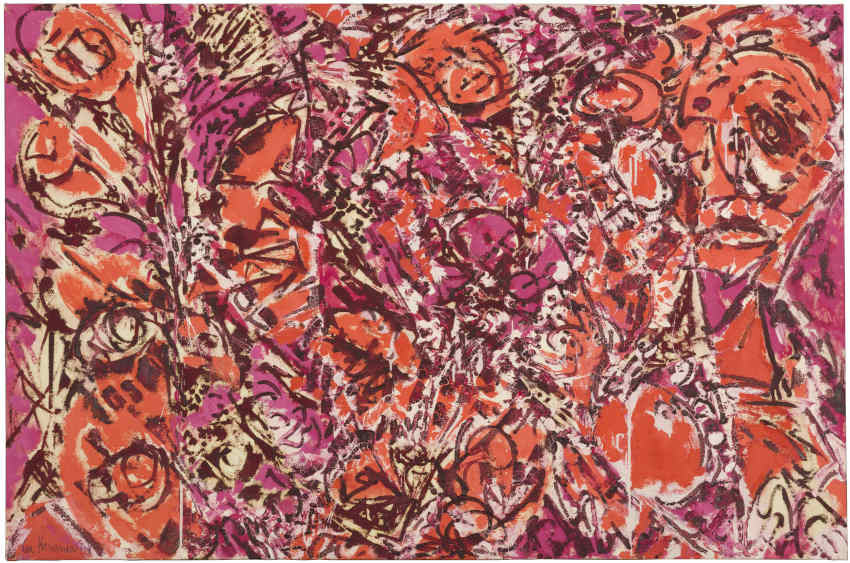
Lee Krasner - Icarus, 1964. Thomson Family Collection, New York. © The Pollock-Krasner Foundation. Courtesy Kasmin Gallery, New York. Photograph by Diego Flores.
Throughout the next 30 years, Krasner meticulously and fervently explored every angle of her personal style. She simplified it in a stunning series of serigraphs in the 1970s; she combined it with early Modernist positions like Futurism in works like “Imperative” (1976); she opened it up to the effect of new mediums in her “Water” series (1969); and she finally brought it full circle late in life with an untitled neo-Cubist masterpiece created in 1984, which synthesizes painting, charcoal drawing and collage into a composition that expresses nearly every stylistic evolution of her life into a single, profound, elegant statement. A photograph taken of Krasner in front of this piece—the last known work she created—shows her smiling proudly, the gleeful lines of her beautifully mature face echoing the dynamic lines of the painting hanging behind her. This image of a true pioneer and smiling master content in her singular accomplishments is what Lee Krasner: Living Colour will hopefully, finally, bring to life. Lee Krasner: Living Colour will be on view at The Barbican Art Gallery, London, UK from 30 May through 1 September 2019.
Featured image: Lee Krasner - Another Storm, 1963. Private Collection. © The Pollock-Krasner Foundation. Courtesy Kasmin Gallery, New York.
All images used for illustrative purposes only
By Phillip Barcio

